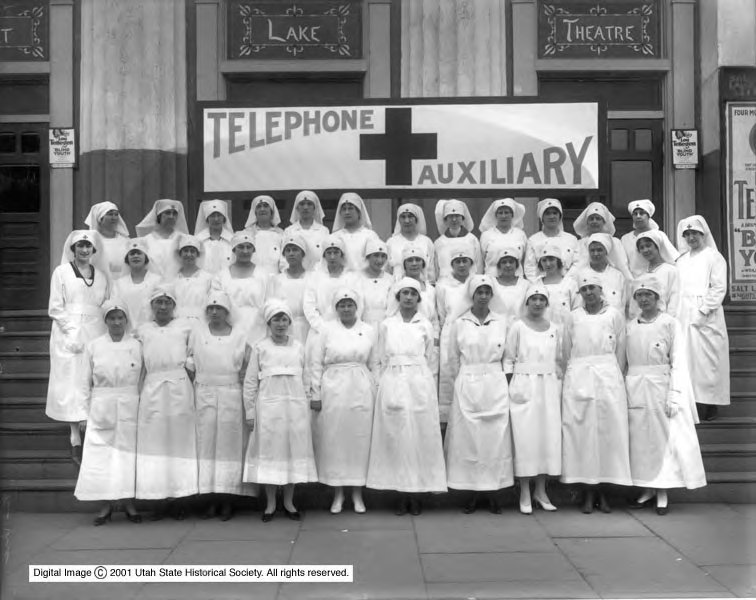By Shavauna Munster & Holly George

When considering the history of illness, signpost pandemics such as the Justinianic plague, black death, and Spanish influenza often come to mind. However, intermittent waves of disease can only be expected in a species of 7.5 billion. The cultural response to bouts of infectious disease is just as important as the scientific research necessary to combat them. Through an examination of past pandemics, we can gain a better understanding of cultural values and beliefs.
As an institution dedicated to preserving and interpreting the past, the Utah Division of State History has many resources that provide context for the COVID-19 pandemic. Below, you’ll find an annotated list of some of those resources.
Influenza

Thomas G. Andrews: The Great Epizootic of 1872-73 and the Deep History of Humans, Equines, and Influenza. Andrews’s keynote address at our 2019 conference is exceedingly relevant to the present. A version of his address is forthcoming in Utah Historical Quarterly.
Several UHQ articles discuss the influenza pandemic touched off by World War I and the war itself.
- Robert S. McPherson: The Influenza Epidemic of 1918: A Cultural Response (1990)
- World War I centennial issue (volume 86, no. 3, 2018)
- Utah and World War I (volume 58, no. 4, 1990)
Our friends at the Mountain West Digital Library and the University of Utah just posted the 1918 Flu Pandemic Newspapers, a collection of over 1,000 articles published in Utah from 1918 to 1920 documenting the Spanish flu.
Disease, Healthcare, and Sanitation in Utah
A number of UHQ articles document healthcare and sanitation practices in Utah and provide insight about how Utahns have reacted to infectious diseases—including influenza and polio.

- Polly Aird, “Small But Significant: The School of Nursing at Provo General Hospital, 1904–1924” (2018)
- Kathryn Callahan, “Sisters of the Holy Cross and Kearns-St. Ann’s Orphanage” (2010)
- Ben Cater, “Grassroots Healing: The Park City Miners Hospital” (2010), “Segregating Sanitation in Salt Lake City, 1870–1915” (2014), and “The Religious Politics of Smallpox Vaccination, 1899–1901” (2016)
- Jessie Embry, “Diploma Nursing at Salt Lake City Religious-Based Hospitals” (2008)
- John Grima, “Ogden’s Forgotten City Hospital” (2019)
- David A. Hales and Dorothy Bird Killpack, “Health Care in Millard County: The Medical Career of Myron E. Bird” (2009)
- Kathryn L. MacKay, “Sisters of Ogden’s Mount Benedict Monastery” (2009)
- Troy Madsen, “The Company Doctor: Promoting Stability in Eastern Utah Mining Towns” (2000)
- Barbara Mandleco and Carma Miller, “A History of Children’s Hospitals in Utah” (2008)
COVID-19
Finally, our experiences during the current pandemic matter. A record of even the most mundane efforts to thrive during this time—making sourdough and face masks, learning to garden, or juggling work with homeschooling—will help future generations make sense of life during COVID-19. Here are resources and inspiration to help us all document what we’re living through:
- COVID-19 Memory Project is designed for K-12 students to share their experiences during this time. Student responses will become part of a permanent historical collection retained by Utah Division of State History.
- Utah COVID-19 Digital Collection from the University of Utah.
- Susie Boyce, Why Historians Say We Should All Be Journaling during COVID-19.
